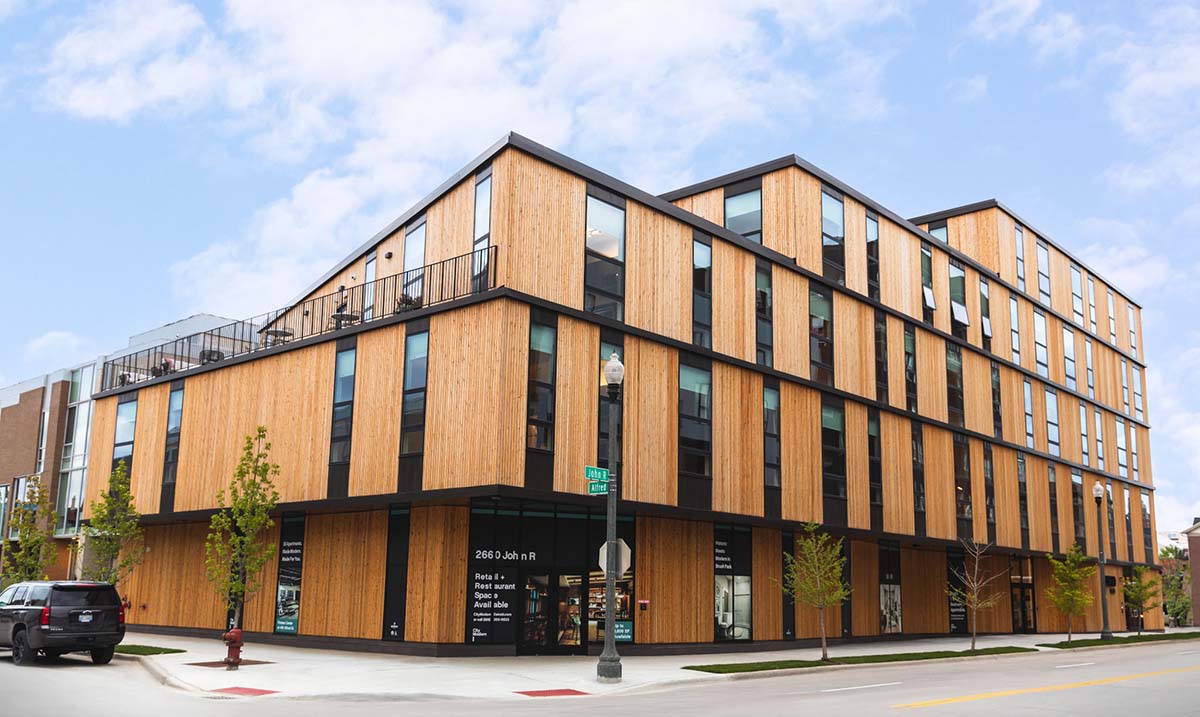Hydronic zone systems are nothing new. They’ve proven to be an efficient technology — and an energy-efficient one, too. And with a heightened focus globally on being more energy efficient that has more than influenced the HVACR industry, the potential role hydronic zone systems can play in advancing decarbonization and sustainability efforts deserves a refresher.
Recently, Alan Jones, senior director of product management for Xylem, co-authored a white paper that provides that refresher. The white paper, “Building a Sustainable Future: Solving Modern Building Challenges with Hydronic Systems,” argues hydronic zones as the sustainable heating and cooling system of choice.
“We thought an education campaign would be really important — and we're kind of at that point where there's generational handoffs, a lot of people retiring in the industry,” said Jones. “A lot of new people are taking the reins of engineering firms and even within our contractor base, so we thought it was very important to help people understand where the potential role for hydronics will be within this current environment, and the challenges that we all have.”
Hydronic Capabilities
To understand the role hydronics can play, it’s critical to understand some of the benefits that water, a naturally occurring resource, has in general as a transportation device for thermal energy: it’s more energy efficient.
“We’re made of water, so obviously it’s something that is very safe for us … versus trying to transport heat with air which is very inefficient, or refrigerants that may be a little more dangerous to us,” Jones said. “Water in hydronic systems is in a closed loop system so it’s not continually consumed.”
Jones said. “When it’s utilized in hydronics, it’s a closed loop system so it’s not something that continually consumes water, but it takes advantage of the properties of water.”
In many cases hydronic systems have a long lifespan of 20 to 25 years, proving the investment and their cost efficiency.
“ … We've done some cost comparisons on that total cost of ownership which includes replacement parts, ongoing maintenance, and of course the efficiency, the energy cost of operating it … and hydronic systems can be up to 30% cheaper than competitive technologies,” Jones said.

COST SAVINGS: Hydronic systems can be up to 30% cheaper than competitive technologies. (The Residences at City Modern. Courtesy of Bell & Gossett)
A recent study done by Xylem evaluated the different HVAC systems throughout a number of South Carolina schools. The study found that hydronic systems outperformed the other systems in energy costs, efficiency, and life expectancy by 24%. Overall, hydronic systems were more economical over their lifespan.
Hydronic systems are applicable in a wide variety of commercial applications. One place where hydronic zones have really proven to be effective is in hospitals.
“With modern technologies in pumping, and the integration of variable speed pumping, the thermostatic balancing that you can do throughout the hydronic system so you can keep different zones at different temperatures — in a hospital, you can provide that more fine-tuned control that's needed in those types of environments,” Jones said.
Hydronic Challenges
One of the best things about hydronic systems, according to Jones, is all the different ways they can be structured: primary, secondary, tertiary — there is a lot much control in branching the loops. Which can also be a challenge.

SUSTAINABLE: Featuring built-in intelligence and a sustainable-forward, compact design, the e-1510X Smart Pump marries the proven efficiency of the e-1510 end-suction pump with Xylem’s innovative hydrovar X Smart Motor. (Courtesy of Xylem)
“With so many options, you really want to understand what’s best for your application,” Jones said. “What are the needs of this building? How am I designing to allow for future flexibility in case situations change?”
Sometimes, when presented with unlimited options, it can be difficult to come to a decision. This makes it really important to contact professionals with experience in the HVAC industry when both designing and installing hydronic systems. Because hydronic system design provides so much flexibility, especially if a contractor isn’t too familiar with it, consulting professionals can help them optimize long-term costs and energy usage.
“It really hinges on that design,” Jones said.
In regard to training on hydronic systems, Bell & Gossett, who released an e-book titled, “Legislation and Economic Incentives Drive Hydronic Solutions,” based on Jones’ white paper, has done a lot of training on understanding hydronic systems overall. Since the inception of the Little Red Schoolhouse in 1954, the educational facility has trained over 70,000 engineers, contractors, and hydronic HVAC and plumbing professionals; differentiating itself by emphasizing a systems-based concept of teaching, rather than focusing on product features and benefits.
Increasing Hydronic Installs
The pressure is on to have more energy-efficient buildings as people continue to evaluate more sustainable HVAC system options, deal with the additional pressure from industry regulations, and the overall electrification of the grid. As a result, more people are bound to look toward hydronic zone systems.
“It’s not just a financial incentive, where it may have been in the past,” Jones said. “Now it's an imperative. It’s tied to regulation. There's parts of the country that are saying we're not going to hook up gas anymore to buildings, it's all going to be electrical.”
Jones mentioned St. Louis, Missouri, which is going to measure and benchmark the total energy consumption of buildings and start to penalize the worst offenders.
“All those things are going to drive people to take another look at what options we have for optimizing our whole consumption,” Jones said. “Typically at a commercial building 37% of that cost is tied to the heating and air conditioning, so that is naturally going to drive people to more examination and different decision making and I think that is going to increase the utilization of hydronics.”








